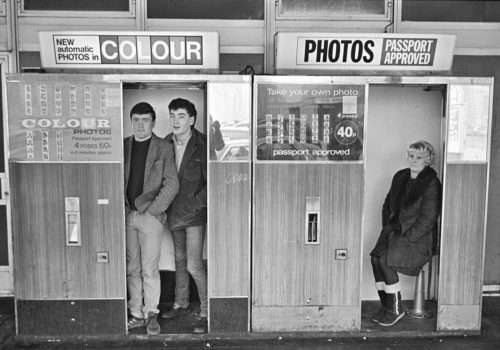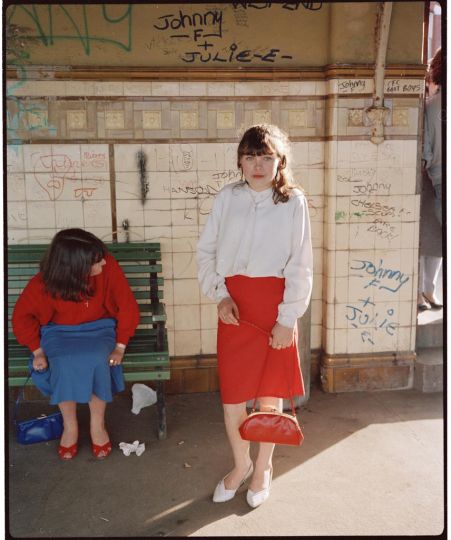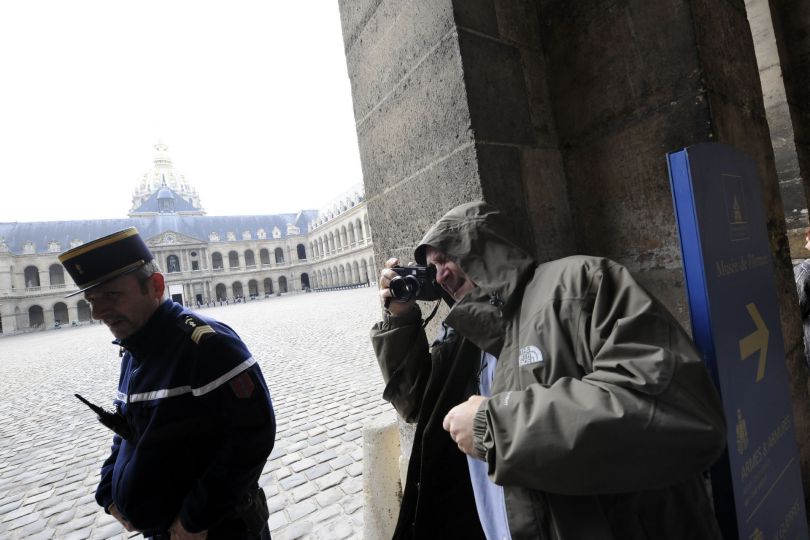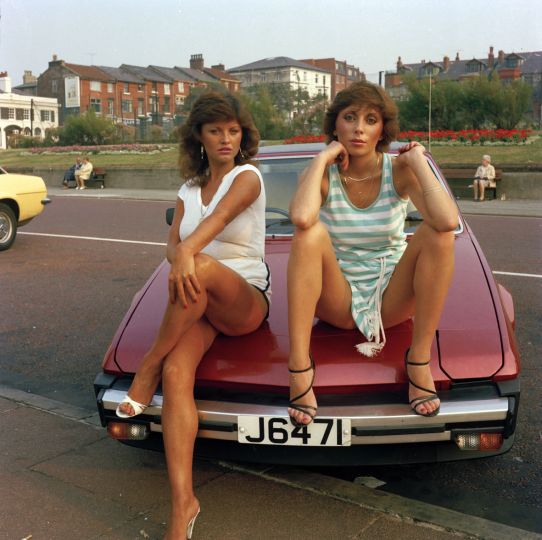The Pierhead, on view at the Centre Photographique in Rouen, brings together some seventy original images selected from a prolific body of work carried out by Irish photographer Tom Wood in Liverpool between 1978 and 2002.
Tom Wood’s images tell us as much about his adoptive town as they do about himself: an Irishman fascinated by the many faces of Liverpool, a town he has been exploring for over two decades. Residential and beachfront zones, boatyards and docks sit side by side or impinge on one another. The photographer contemplates this diversity on his daily walks between the two banks of the Mersey River which separates his home from his workplace. In the late 1970s and 80s, while teaching photography techniques at the Liverpool School of Art and Design, Tom Wood would often mingle with the crowds waiting for the ferry at the Pier Head: commuters exhausted after a long workday, bands of teenagers out to have fun; the young, the old, the poor, and those less poor rubbed shoulders on the waterfront. The Pier Head is the location of both a ferry landing stage and a bus terminal; it’s also a transfer point for Merseyside, and a popular meeting spot. “Pier Head was always bustling with people. It was a dynamic, restless place,” recalled the artist. “I would often miss my ferry and, while waiting for the next one, I’d take photos.”
Accustomed to seeing his tall figure, a Rolleicord around his neck, local kids gave him the affectionate moniker “Photie Man.” Admittedly, Tom Wood observed his fellow humans with a compassionate gaze and tender curiosity. Whether training his lens on a pack of brazen adolescent girls or capturing a fleeting moment of intimacy, he exhibited the same generosity, the same outgoing attitude. “I merely record the sense of humor and the energy of these people,” the photographer, whose images have the charm and the exuberance of family photos, was often heard explaining.
Unlike Martin Parr, one year Wood’s junior, who has chosen the declining seaside resort of New Brighton as his privileged hunting ground, Wood is not on the lookout for trivial scenes. In his work, you will find no candied colors or untimely bursts of the flash; his wide-angle shots evoke small theaters where everyday farce and mini dramas get played out. Parr, who quickly won over art galleries and collectors, cultivates irony and never gives in to empathy; Wood, on the other hand, despite his obscurity, overflows with humanity. Wood photographs from an insider’s perspective, capturing, in the words of the late John Berger, “the sincere and often disjointed, yet always profoundly human, nature of the masses populating the city he chose as his home.”
Documentation, however, is not his primary goal. He accumulates photos because he knows that a good image can only emerge from a series, from tireless observation of the world around him. The only way to take good photos is, according to Wood, to forget what one is doing, to become self-unaware; to blend with the surroundings in order to capture them better; to get up-close to things, and catch in your viewfinder whatever happens to come along. He keeps returning to the same places, circling around the subject in order to amass as much detail, as much nuance as possible.
Rather than build a photographic series, as the unity of place and the effect of accumulation might seem to suggest, The Pier Head offers singular material charged with communicative energy, a veritable counterpoint to the Thatcher era which had left in its wake a moribund working class, brought to its knees by race riots and plant closures.
Tom Wood loves music. His vinyl collection is in the thousands—bargains picked up between one shot and the next. This is not at all surprising if one remembers that Liverpool might have been the only place in England to have generated a new musical form: the famous Mersey beat, a curious blend of local solidarity, industrial decline, and Irish influence.
Wood’s voluminous archives—which encompass Bus Odyssey, an epic project he’s been working on for twenty years, consisting of 100,000 images to date—and which the photographer keeps sorting through, have given rise, in addition to The Pier Head, to several other series that offer a cross-section of the photographer’s career since 1975. Women and Men combine posed images and snapshots, color and black and white pictures: anonymous portraits which, in Tom Wood’s discreet gaze, take on an infinite human depth.
Like Graham Smith who had long remained in the shadows, Tom Wood deserves to be recognized alongside such great figures of British photography as Tony Ray-Jones and Chris Killip. “Photography is a deadly medium that can kill life,” Wood said. Yet it is also the medium he had chosen to celebrate—to our great delight.
Cathy Rémy
Cathy Rémy has been a journalist at Le Monde since 2008, where she features the work of young photographers and emerging visual artists. Since 2011, she has contributed to M Le Monde, Camera, and Aperture.
Tom Wood
March 4 to April 27, 2017
Centre Photographique
15 rue de la Chaîne
76000 Rouen
France
www.poleimagehn.com
Facebook et Instagram : @centrephotographique



















